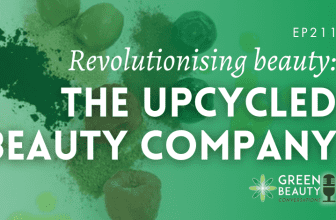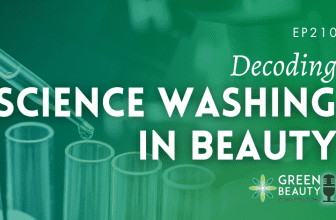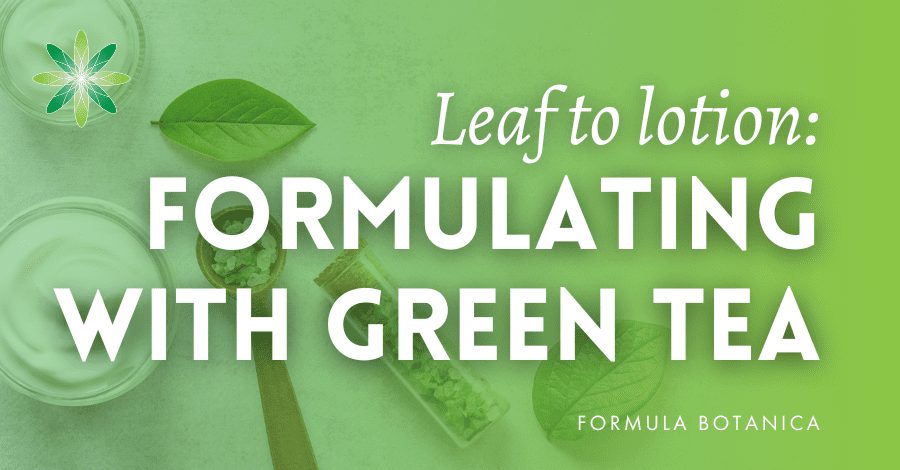
[ad_1]
We drink it, but do we formulate with it? Tea, or more specifically green tea has gained significant recognition in the beauty industry for its remarkable benefits and versatility as a cosmetic ingredient. In this blog post, we explore the numerous reasons why green tea stands out when it comes to enhancing natural cosmetic products with interesting, high-performance ingredients.
While both green tea and black tea originate from the same plant, Camellia sinensis, their processing methods differ significantly, resulting in distinctive properties. Green tea is minimally processed, allowing it to retain a higher concentration of beneficial bioactive compounds compared to black tea (i). These compounds include polyphenols, and specifically catechins which act as potent antioxidants.
In this formulator’s guide, we explore the science-backed benefits of green tea in skincare for you to make the most of its active compounds in your formulations. So, let’s dive into the world of green tea and equip you with the knowledge to unlock the potential of green tea in your own organic cosmetic creations.
Extracts of green tea in cosmetics

There are various types of green tea extracts available for use in natural cosmetics that range from micellar waters to moisturisers, each offering unique properties and benefits to help target specific skin concerns. By understanding these properties, you can harness the power of green tea to create effective skincare products.
Here are a few of the most commonly used extracts:
Green tea extract powder – Camellia sinensis leaf extract: This water-soluble, powdered extract is derived from green tea leaves and is a concentrated form of the beneficial compounds found in green tea. It is a versatile ingredient that can be easily incorporated into various cosmetic formulations, including emulsions, masks, scrubs, and cleansers. Green tea extract powder is prized for its antioxidant, anti-inflammatory, and astringent properties. It can help tone and soothe, and provide a revitalising boost to the skin.
Green tea seed oil – Camellia sinensis (seed) oil: Extracted from the seeds of green tea, this oil is highly nourishing and moisturising for the skin. It is rich in essential fatty acids, vitamins, and antioxidants, which contribute to its rejuvenating effects. Green tea seed oil is lightweight and easily absorbed, making it suitable for facial oils, serums, and moisturisers. Its moisturising properties can help improve skin elasticity and promote a healthy, radiant complexion.
Green tea hydrosol – Camellia sinensis leaf water: Also known as green tea distillate, this extract is obtained through the steam distillation of green tea leaves. It contains some of the volatile, water-soluble components of green tea and is used for its refreshing and toning effects, making it an excellent addition to facial mists, toners, and refreshing sprays. It can help improve the appearance of pores, and provide a refreshing boost to tired or dull-looking skin.
Green tea wax – Camellia sinensis (green tea) leaf wax: This is extracted from the leaves of the tea plant during supercritical CO2 extraction, which is the method typically used to remove caffeine from the leaves. However, during this process, the crude wax that protects the leaves of the tea plant is also simultaneously removed and collected. Although it is called a wax, it isn’t too similar in composition to other true botanical waxes and is closer in definition to a CO2 extract. Green tea wax possesses excellent emollient and protective properties in the form of a lightweight barrier on the skin. Green tea wax also provides a smooth and luxurious texture to cosmetic products, enhancing their spreadability and glide, as well as offering a pleasant green colour. It is a versatile ingredient that can be used in formulations such as lip balms, creams, lotions, and solid sticks balms to offer both functional and skin-nourishing qualities.
Green tea glycerite: This is created by macerating green tea powder or leaves in glycerine. The glycerite is known to have anti-inflammatory, antimicrobial, antioxidant, and ideal properties for use in mature skincare. It contains polyphenols and catechin derivatives; the main components of the plant’s leaves. These compounds are known to be remarkable antioxidants, acting against lipid peroxidation and preventing the photo-ageing process. Do note that suppliers’ INCI for green tea glycerite may vary as some include preservatives. A typical INCI would be: Glycerin (and) Aqua (and) Camellia sinensis leaf extract.
The antioxidant benefits of green tea in cosmetics
First, let’s recap on the crucial role antioxidants play in maintaining the health and vitality of our skin. They help combat the damaging effects of free radicals, which are unstable molecules that can cause oxidative stress and contribute to the visible signs of the skin’s premature ageing. You can read up on antioxidants in our in-depth post:
When it comes to antioxidants, green tea is a powerhouse that offers a wide array of benefits for the skin.
Green tea contains a class of antioxidants called polyphenols, with one of the most abundant being a type of catechin called epigallocatechin gallate (EGCG) which comprises over 50% of its catechins. EGCG has been extensively studied and has shown remarkable antioxidant activity (ii). It has the ability to neutralise free radicals, preventing them from causing damage to the skin cells.
The high concentration of EGCG in green tea makes it a potent defender against environmental damage. Environmental factors such as pollution and UV radiation, can lead to the production of free radicals in the skin, accelerating its ageing processes. Green tea antioxidants work to counteract these harmful effects, helping to protect the skin from oxidative stress.
Green tea and collagen
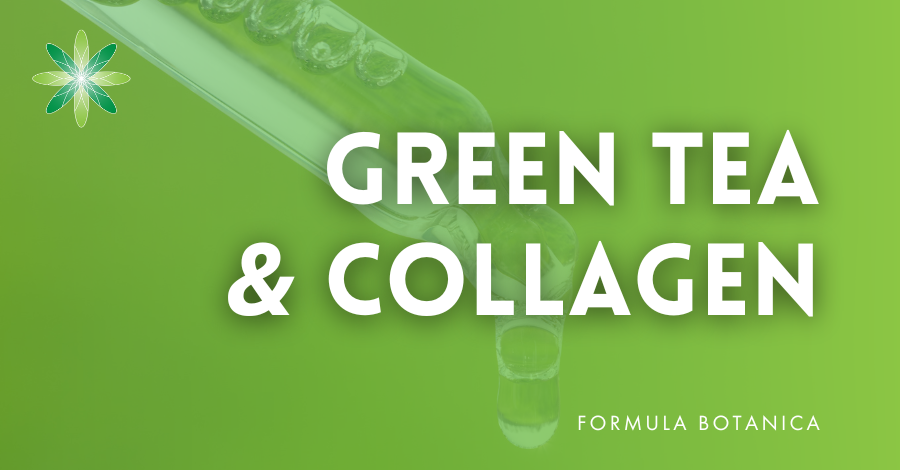
In addition, green tea’s antioxidant properties go beyond just fighting free radicals. Green tea offers a range of benefits in cosmetics that are particularly aimed at mature skin. One of the key ways green tea contributes is by helping inhibit – indirectly – the breakdown of collagen, a key protein responsible for maintaining skin elasticity (i). As we age, collagen production naturally declines, leading to the appearance of fine lines, wrinkles, and sagging skin. However, green tea can help combat this process to maintain the skin’s firmness and elasticity.
The polyphenols in green tea are able to protect and restore vitamin C, which is important in the synthesis of collagen. By preserving collagen levels, green tea can help improve the skin’s firmness and reduce the appearance of fine lines and wrinkles.
Several studies have explored the effects of green tea on collagen production. One study published in the Journal of the American Academy of Dermatology found that topical application of green tea extract resulted in an increase in collagen production in human skin cells (iii). This suggests that incorporating green tea into skincare formulations can support collagen synthesis, leading to smoother, more resilient skin. However, the study also notes that there are challenges harnessing green tea extracts’ benefits in topical cosmetic ingredients in relation to the stability of its antioxidants and their skin penetration. Catechins are very sensitive to oxygen and light and so careful formulation is needed to ensure they retain their bioactive benefits in cosmetics (i).
Green tea’s anti-inflammatory benefits
Green tea contains compounds that have been found to have a soothing effect on the skin. It helps to alleviate redness, itching, and discomfort associated with irritated or sensitive skin. The anti-inflammatory properties of green tea can help reduce skin reactivity and restore a sense of calmness to the skin.
Toning and astringent benefits
Formulating green tea into cosmetics such as face masks, toners and micellar waters can result in the skin looking more refreshed and toned. This is due to the astringent properties of green tea’s polyphenols and tannins. The overall effect can be to reduce skin redness, and calm and soothe irritation. Green tea extracts have a disinfecting and toning effect which can help improve the appearance of pores and inhibit excessive sebum production (iv).
Cosmetic benefits of caffeine
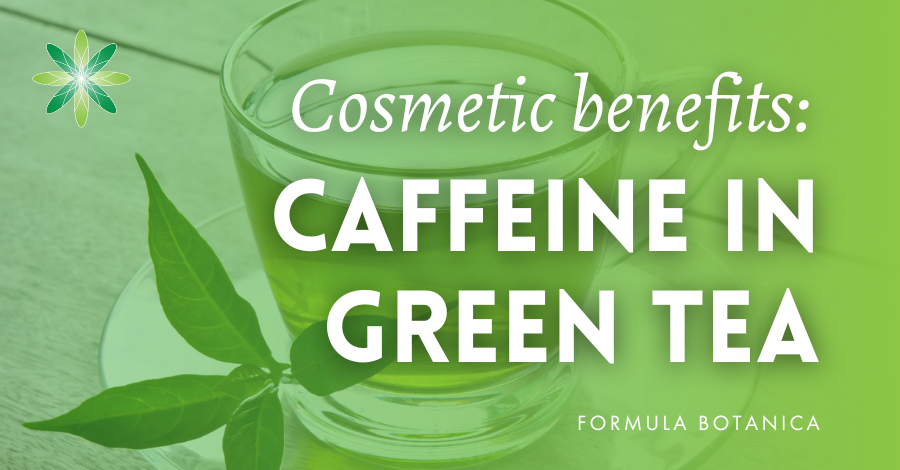
As we’ve discussed, green tea leaves are the most rich sources of catechins among plants, but they also deliver caffeine, which is of great value in cosmetic applications. Caffeine plays a significant role in terms of its microcirculatory and anti-cellulite benefits.
Microcirculatory benefits: Caffeine has been shown to have vasoconstrictive properties, meaning it can temporarily narrow blood vessels. When applied topically, this can lead to improved microcirculation in the skin. Enhanced microcirculation helps to increase blood flow to the skin’s capillaries, delivering oxygen and nutrients more efficiently. This can result in a revitalised appearance, improved skin tone, and a reduction in the appearance of dullness or fatigue.
Anti-cellulite benefits: Caffeine is a common ingredient in many anti-cellulite products. The microcirculatory benefits we mentioned earlier help bring more oxygen to skin cells which in turn speeds the burning of fat.
Studies have shown that topical application of caffeine can have positive effects on cellulite (v). Research published in the Annals of Dermatology found that a cream containing caffeine resulted in significant reductions in thigh circumference and cellulite severity. We must note that this particular research used a high concentration of isolated caffeine and we probably wouldn’t find the same action from an extract with lower amounts of caffeine.
It’s important to note also that while caffeine can provide temporary cosmetic benefits, it does not permanently eliminate cellulite or completely reverse microcirculatory issues. However, incorporating green tea extracts, which naturally contain caffeine, into cosmetic formulations can contribute to the overall efficacy of products aimed at improving microcirculation and reducing the appearance of cellulite.
Green tea for hair care
As you can see from the properties we’ve mentioned so far, green tea seems a natural contender for use in hair and scalp care preparations too given its soothing, antioxidant, stimulating, toning and revitalising capabilities. There is evidence that its caffeine helps stimulate the hair follicles aiding the promotion of hair growth and in mitigating hair loss (vi). Green tea extracts can prove very useful in shampoos and other cleansers aimed in particular at greasy hair and/or dandruff conditions, but also offer revitalising properties for all hair types.
Formulations with green tea
Green tea extracts are a versatile and highly-beneficial ingredients for natural cosmetic formulations. In this post, we’ve explored just some of the numerous advantages that green tea brings to skincare and haircare products, from its antioxidant properties to its anti-inflammatory and soothing effects.
As natural cosmetic formulators, you can enjoy exploring the possibilities of incorporating green tea into your formulations and we encourage you to access the references below to read up on its benefits. There is a wealth of research on green tea, and, as many of the scientific papers say, much more to investigate about it, in particular in relation to the optimal formulation types to harness and deliver its benefits.
Whether you’re developing skincare products targeting mature skin, soothing sensitive skin, or addressing concerns like acne or cellulite, green tea can be a valuable addition. Experiment with different types of green tea extracts, such as green tea leaf powdered extract, green tea seed oil, or green tea hydrosol, to include both its water- and oil-soluble compounds into different types of formulations.
We’ll leave you with two fun formulations that use different extracts of green tea in cosmetics:
Formulate a green tea and cocoa body balm stick – green tea wax, used for its colour and as a stabiliser.
How to make a green tea and lemon body polish – it uses green tea powdered extract.
References and further reading
i. Wojciech, Koch, et al;(2019): Applications of tea (Camellia sinensis) and its active constituents in cosmetics.
ii. Eunji Kim, et al; (2018): The skin protective effects of epigallocatechin gallate.
iii. Hsu, Stephen, (2005): Green tea and the skin.
iv. Susana Saric, et al; (2016): Green tea and other tea polyphenols: Effects on sebum production and acne nulgaris.
v. Byun S.-Y., et al; (2015) Efficacy of Slimming Cream containing 3.5% water-soluble caffeine and xanthenes for the treatment of cellulite: Clinical study and literature review.
vi. Kwon O.S. et al; (2006): Human hair growth enhancement in vitro by green tea epigallocatechin-3-gallate (EGCG).
FREE FOUNDATION COURSE
How to become an
Organic Skincare Formulator
FREE TRAINING
How to become an
Organic Skincare Entrepreneur
Join over 100,000 other Formulators
FREE TRAINING
How to become an
Organic Skincare Entrepreneur
Join over 100,000 other Formulators
Leave us a comment

Liz is Formula Botanica’s Content Coordinator and joined our team in August 2020. Liz worked as a professional blogger, journalist and site developer for many years and was also part of the Formula Botanica student community. Read more about the Formula Botanica Team.
[ad_2]
Source link



